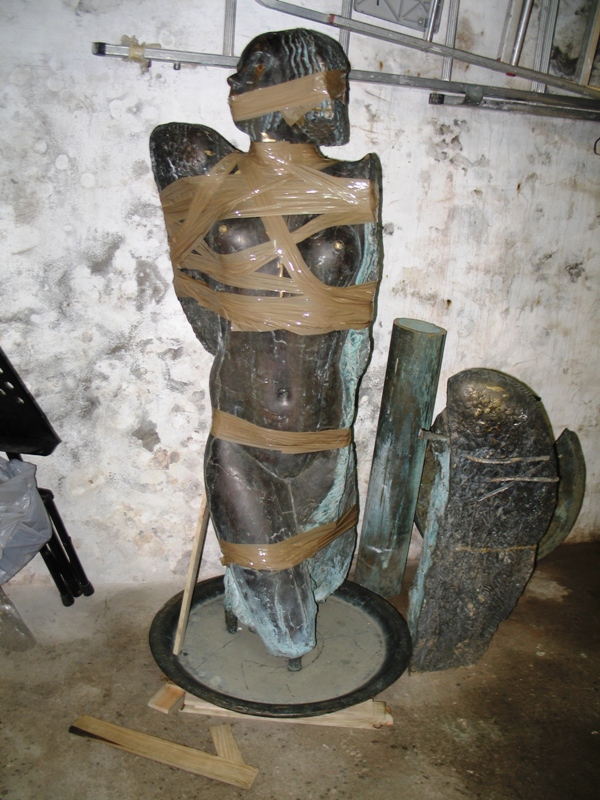The Angel was a 1.5 meter tall bronze sculpture by fêted Portuguese artist José Rodrigues. The centrepiece of a new shopping centre, this winged, female figure was installed in Angel Square, Porto, in 1996. This was the beginning of the end of the Socialist Party’s rule and represented the finale of the Rodrigues’ long-term hold over public sculpture in Portugal.
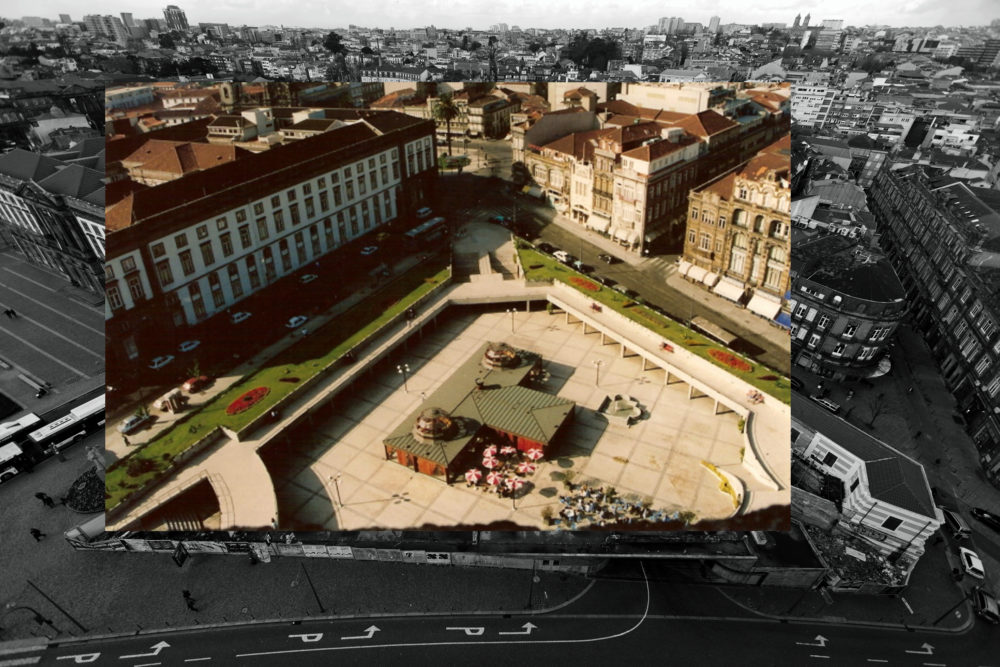
A few decades later, the shopping centre lay abandoned, The Angel lonely, unkempt and degraded. City authorities excluded citizens from conversations about how the square might be reconfigured for future community use.

On the night of 20 December, 2006, The Angel was stolen. The Police Art Unit was informed, the culprits identified, and the work recovered. The sculpture was taken by people living in the abandoned shopping mall who hoped to make a quick sale to a scrap dealer. No more than six hours passed between the time of the theft and the sculpture’s total destruction (she was cut into six parts).
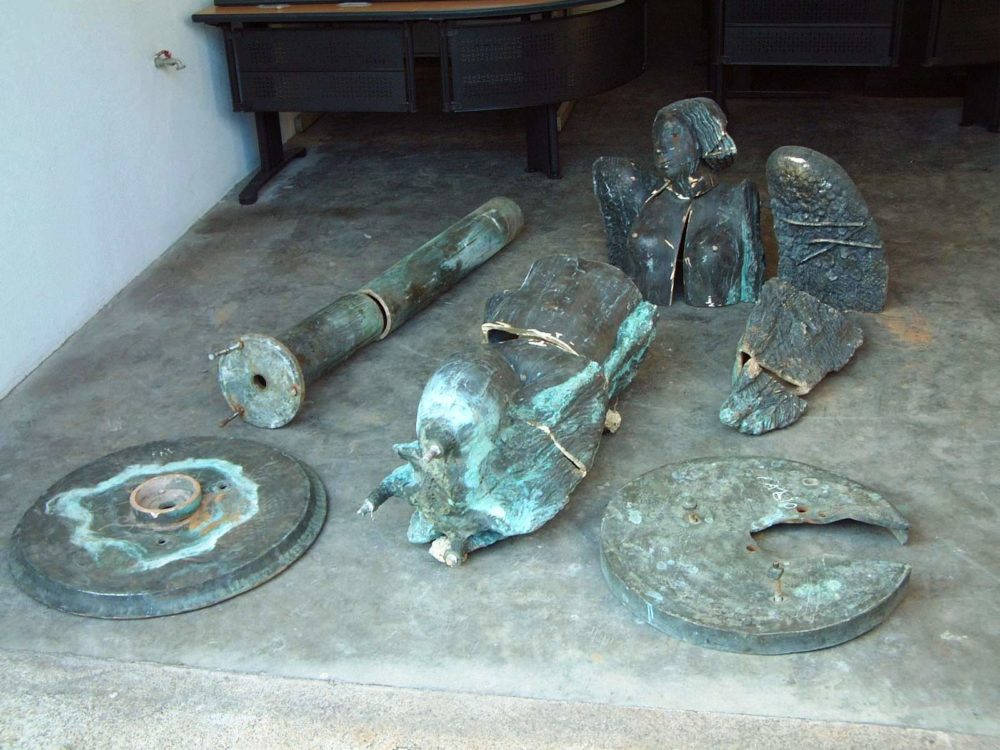
Saddened by the lack of public discourse around the future of the square, a group of artists, led by Carla Cruz and Ângelo Ferreira de Sousa, began a programme of guided tours of the square, in what they termed ‘the ruins of capitalism’. They established a fictional entity, ‘The Association of Friends of Angel Square’ (aapA), which assumed the guise of an official organisation. They held annual dinner parties for members on site, within the ghostly architectural remains of the shopping centre, and formally requested information from the authorities regarding the whereabouts of The Angel.
In 2008, the group installed a commemorative plaque where the sculpture once stood. The musical duo Von Calhau performed a requiem in memory of The Angel at the ceremony.
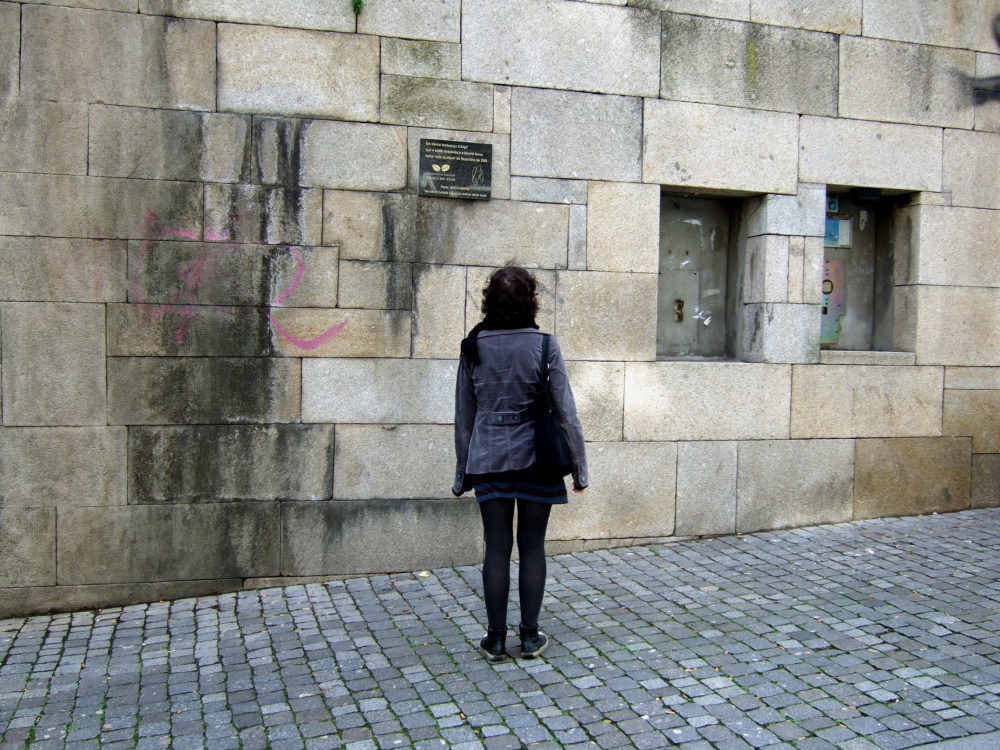
A year later, the scrap dealer involved in the theft was sentenced to four months in prison for receiving stolen goods.
Carla Cruz made an unfired clay reconstruction of the angel’s head for an exhibition in 2010 which was later used in a theatrical production ‘H PPY TO GET HER – The History of the Association of Friends of the Anjo Square, of the sculpture ANJA, of its fall and of the Square’.

In 2011, the aapA held its annual dinner in the underground car park, the only surviving inhabitable space in the shopping centre. They called it the ‘anti-mediocrity night’, with attendees wearing masks, in reference to José Rodrigues’ response when he was informed about the theft of his sculpture (“Her, always her! – Mediocrity” – he was sorry that the thieves weren’t “large men who, hidden under beautiful masks, like in Hollywood movies, would kidnap the The Angel and take her to another, happier world”) 1.
The plaque disappeared in 2013 when renovation works began on the square. aapA wrote an open letter to the Mayor of Porto about its disappearance. They didn’t receive a response. Two years later, the group decided to install another plaque (a plaque to a stolen plaque!). A private security guard interrupted the unveiling and public security police were called. A report was filed, the offending item seized, and members of aapA were escorted to the police station where they provided statements after being accused of vandalism and trespassing on private property.
The following day, the aapA held a ceremony to unveil the missing plaque. This event involved a picnic in the Olive Tree Garden and another concert. Days later, a member of the local Public Security Police contacted aapA to let them know that the first plaque had been found in an illegal landfill site. aapA organised a tour of the site and retrieved the plaque.
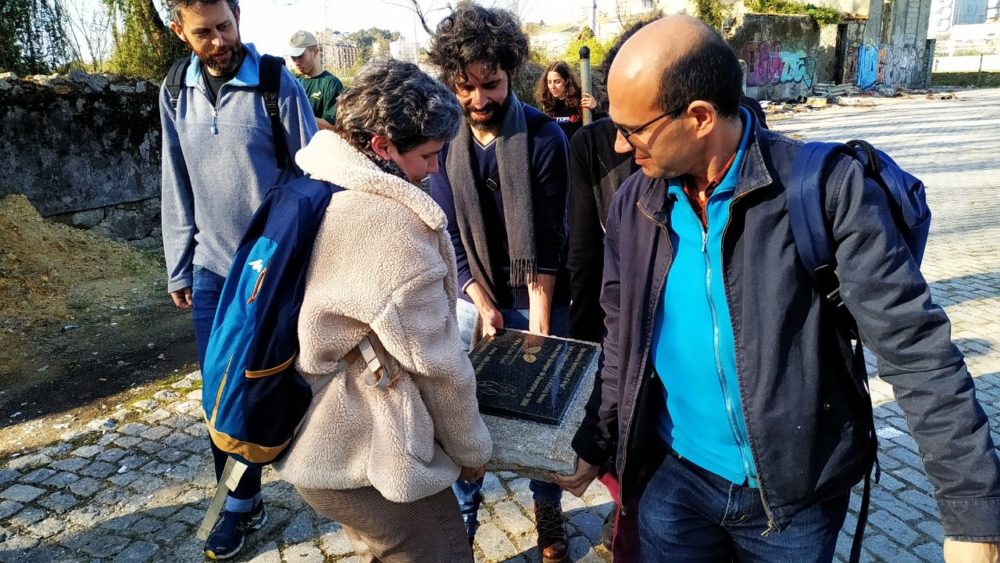
In 2021, aapA members organised a parade through the streets of Porto, with the aim of ‘opening old wounds, discussing the meaning of absence and, above all, the Angel’s presence’.2 This Great Pilgrimage in Honour of Anja’s Absent Body constituted a performance, a walk, a parade, a procession, a demonstration.
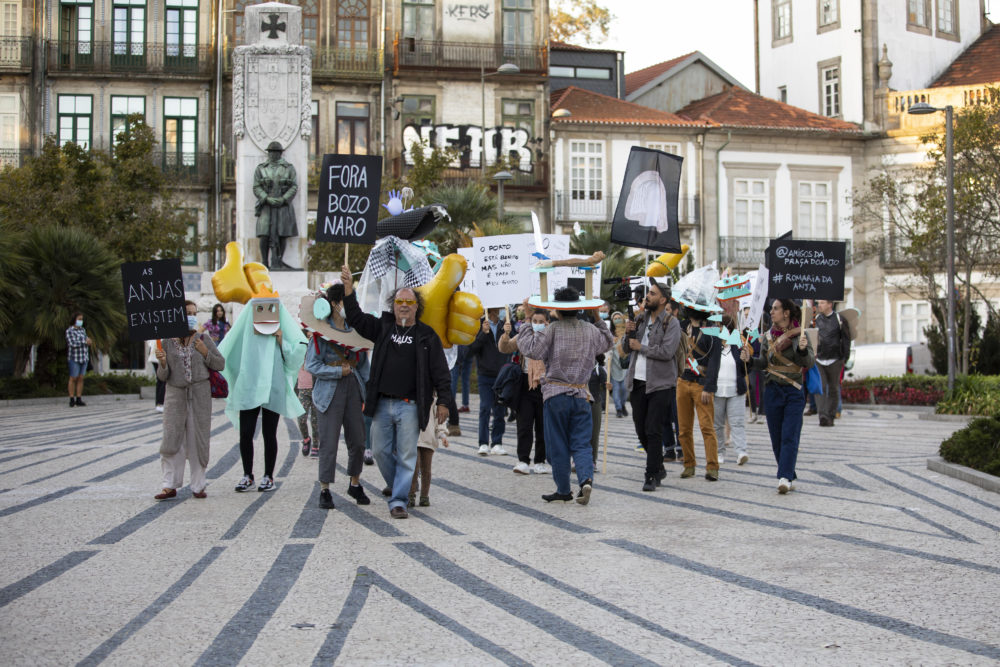
Workshops with adults and children were held prior to the pilgrimage, to construct costumes, placards, wings, monsters, sculptural devices, and headdresses.
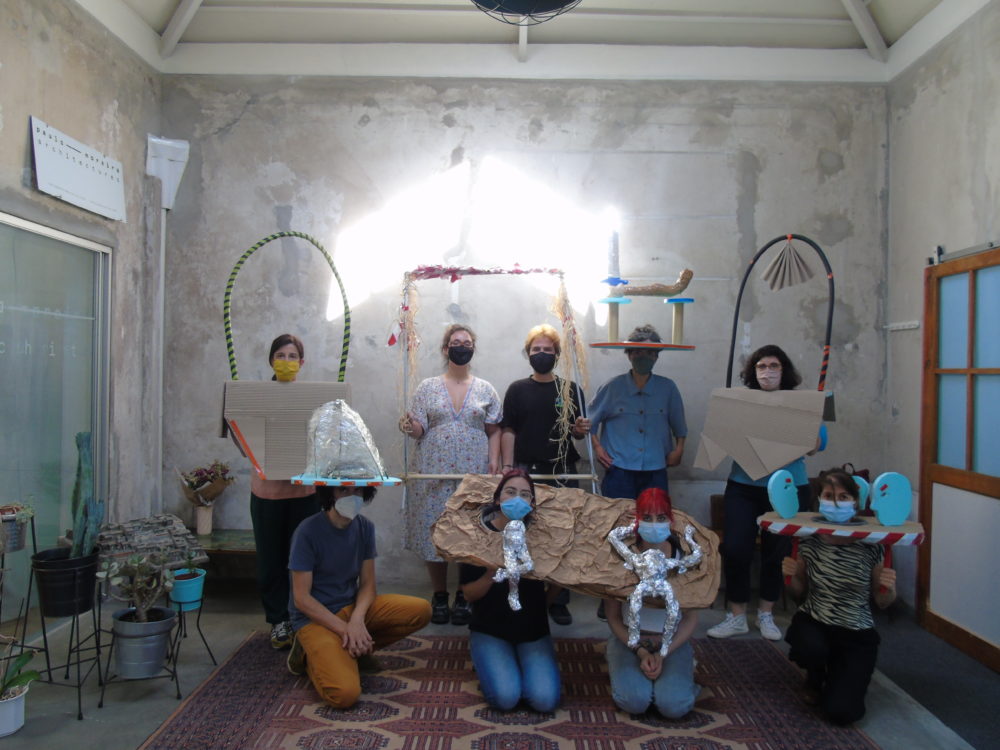
Angel Square is now a privately owned public space, populated by bars, cafés and up-market shops; a team of security guards quietly patrol the aseptic grounds, ensuring that public life and unruly forms of expression are kept to an acceptable, profit-making minimum. No public demonstrations are permitted.
The police complaint filed against the aapA was quietly dropped; the plaque was handed back to the group.
The aapA project is ‘complete’ but the story has no end. Members have never been able to see the sculpture in its mutilated, disparate parts. Held in a warehouse owned by Porto City Council The Angel is forever in limbo, her future dictated by the political whims of the ruling party and the wiles of the neoliberal state.
Throughout its fourteen years of activity, aapA members say they were ‘chasing the statue as a chimera, a winged mythological being, locked in the catacombs of the City Hall’.3 Members worked as faux archaeologists, detectives, community catalysts and creative spirits, provoking the state and the citizens of Porto into recognising the fate of their city. They revelled in confusion caused by the status of their constructed identity and played with our understanding of how art, public sculpture, and monuments can become manifest: ‘The aapA is a shape-shifting anti-monument; it is a fiction’.4 Members are open about the fact that their focus was not on the sculpture, (‘We couldn’t care less about the angel’, they say)5 but rather the democratic right for artists to access the city, in metaphorical, physical and creative ways.
